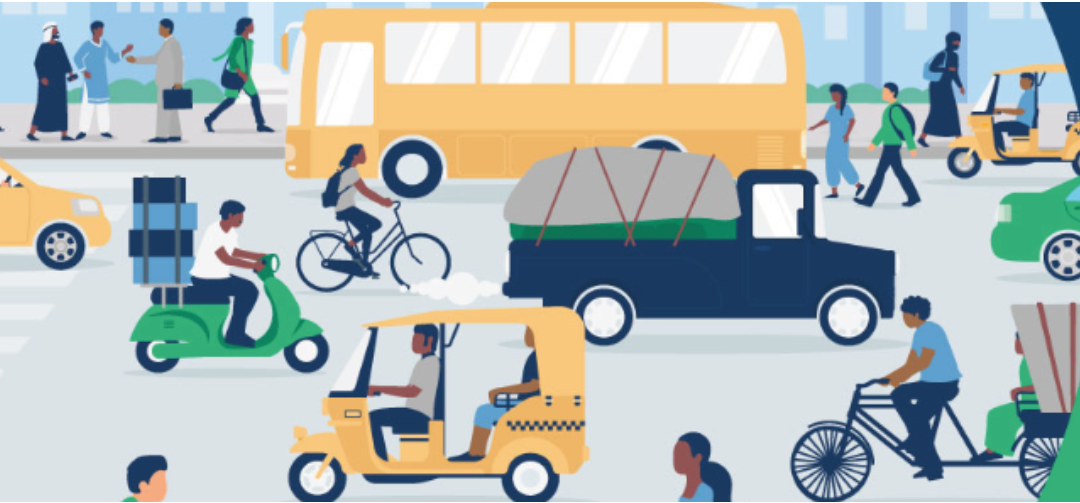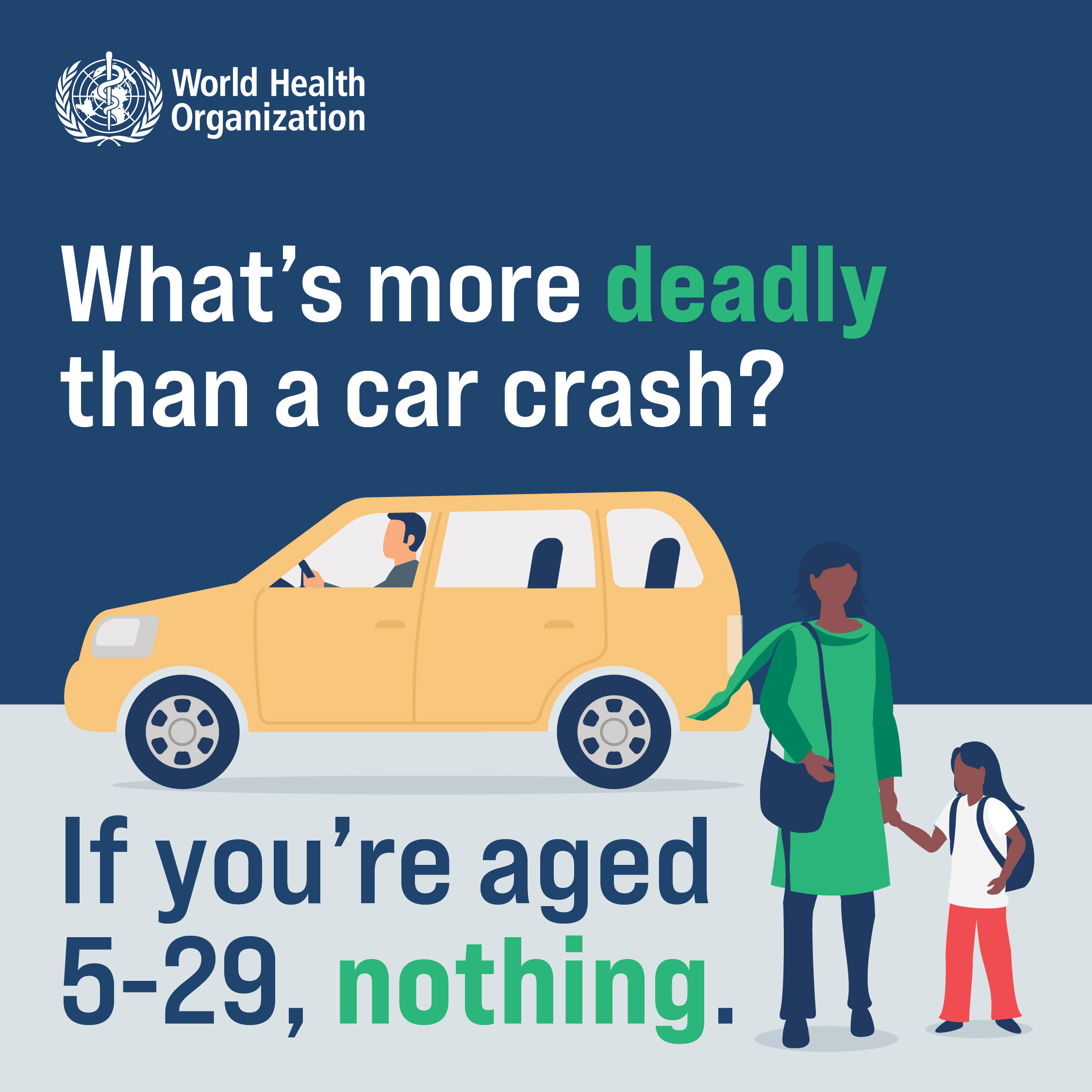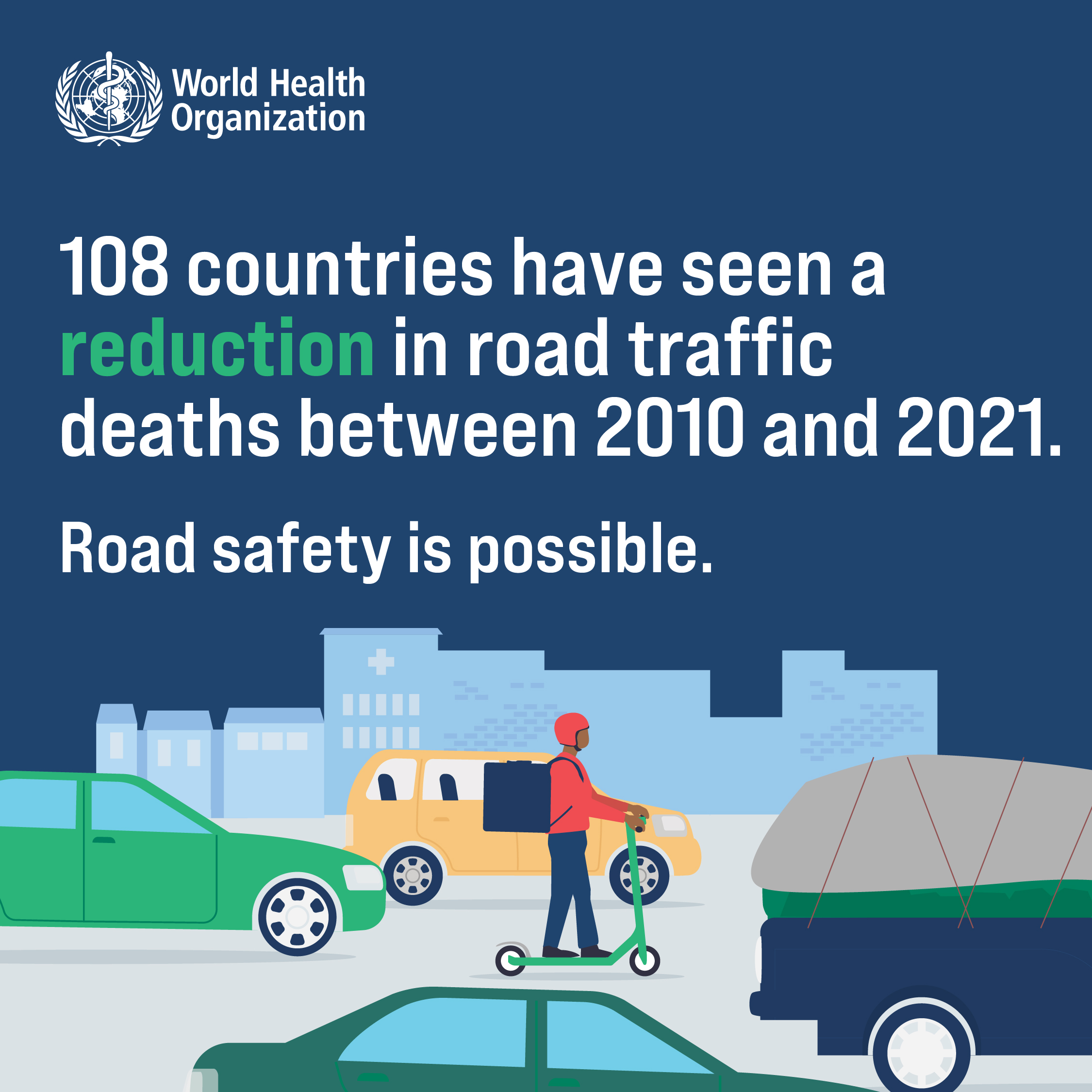A new report by the World Health Organization (WHO) shows a promising 5% reduction in global road deaths between 2010 and 2021. This marks the first decrease since the Global Status Report on Road Safety series began, and comes despite rapid population and vehicle growth.
This progress coincides with the increasing adoption of iRAP’s free infrastructure safety tools and methodology. By 2021, over 100 countries had used iRAP to Star Rate 1.3 million kilometres of roads, supporting over $80 billion in road projects.
However, despite these positive trends, road deaths remain alarmingly high. An estimated 1.19 million people die on the world’s roads each year, making it the leading cause of death for young people.
“While we are cautiously optimistic, we are still a long way from achieving the ambitious targets of a 50% reduction in road deaths and injuries by 2030,” said Rob McInerney, Chief Executive Officer of iRAP. “Sustained efforts and greater investment in proven programs are crucial to achieving these goals.”
“The Global Plan for the Decade of Action and Global Road Safety Performance Targets give us a clear framework for effective action,” he said. “If every country can ensure that most travel occurs on roads rated 3-stars or better, millions of deaths and injuries would be prevented every year.”
“The large growth in road deaths in Africa is especially concerning and highlights the need for partnerships between countries and the international community to accelerate the uptake of proven initiatives such as the Ten Step Plan for Safer Road Infrastructure,” Mr McInerney said.
The report also highlights the growing number of bicyclist (up 20%) and pedestrian (up 3%) deaths. Additionally, deaths involving e-scooters, e-bikes, and other personal mobility devices now account for 3% of total fatalities.
“With urbanization on the rise, ensuring safe streets and speeds is critical for promoting walking and cycling,” Mr McInerney said. “We are working with partners across the globe to scale up initiatives like CycleRAP and Star Ratings for Schools to support safer infrastructure for all.”
Data from the iRAP Safety Insights Explorer reveals the perilous state of many roads, particularly for vulnerable users:
- Pedestrians: Only 18.6% of roads are rated 3-star or better for safety.
- Bicyclists: Only 14% of roads are rated 3-star or better for safety.
- Motorcyclists: Only 33% of roads are rated 3-star or better for safety.
- Vehicle occupants: Only 55% of roads are rated 3-star or better for safety.
“We have seen incredible reductions in deaths and injuries through infrastructure improvements around the world,” Mr McInerney said. “We need to replicate these successes on a larger scale to address the enormous burden of road crashes.”
“With more than $800 billion invested in road infrastructure globally, it is imperative that every dollar spent contributes to safe journeys for all road users. Tools such as Star Ratings for Design (SR4D) mean we can build safety into every road investment, whether it’s for a new road, a road upgrade road or for maintenance,” Mr McInerney said.
The report emphasizes the need for systematic safety inspections of all roads. Currently, only 51 countries have laws requiring such inspections.
“Through the AiRAP initiative, we are harnessing emerging data sources and technology to accelerate large-scale safety inspections using the iRAP methodology worldwide,” Mr McInerney said. “Advances in AI, machine learning, and other technologies make this a rapidly achievable goal.”
Looking Ahead: Partnerships for 2030 Impact
In the second Decade of Action for Road Safety, iRAP’s strategy focuses on building partnerships to achieve the UN Global Road Safety Performance Targets. These targets aim for all new roads to be built to a 3-star standard and at least 75% of existing roads to be upgraded to the equivalent of 3-star or better for all users. Achieving these targets has the potential to save over 450,000 lives annually and prevent over 100 million deaths and injuries over the life of the upgrades.
Key points
- Global road deaths decreased by 5% between 2010 and 2021.
- Despite progress, road deaths remain unacceptably high, especially for pedestrians, cyclists, and motorcyclists.
- Continued investment in infrastructure safety and speed management programs is crucial to achieving global road safety targets.
- iRAP’s methodology and free tools play a critical role in improving road safety worldwide.
- Partnerships and collaboration are essential to achieving the UN Global Road Safety Performance Targets.
For more information:
- Click here to download the WHO Global Status Report on Road Safety 2023
- Click here to watch the Launch event
- Click here to download the WHO press release on the Report’s launch
- Click here to read iRAP’s Strategy: Partnerships for 2030 Impact




















